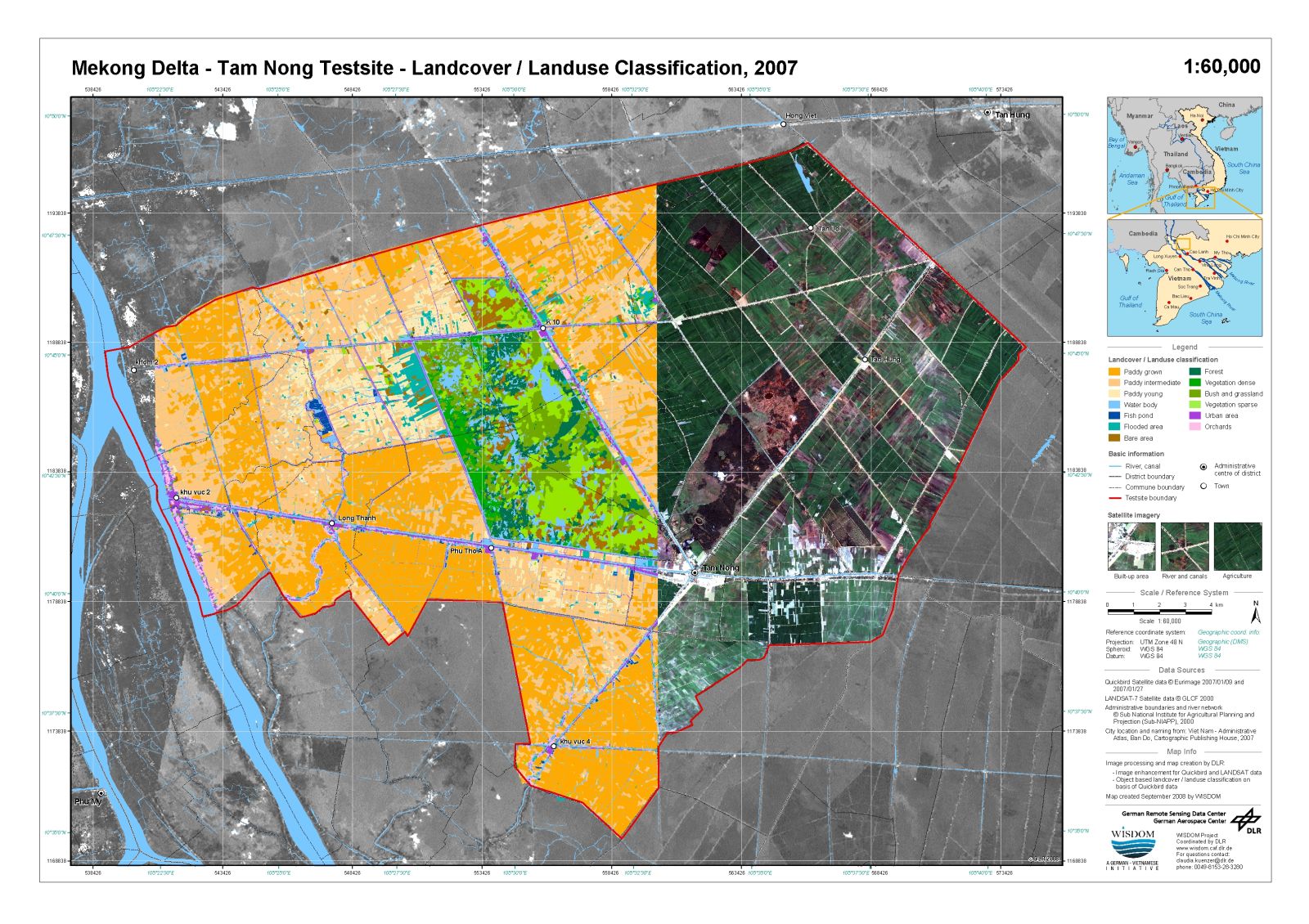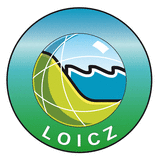Land Use Classification 2007, from Quickbird satellite image – Tam Nong Testsite
The title of this map (Fig. 1) is “Land Use Classification 2007, Tam Nong testsite”. Besides the pixel-based approaches one of which the automated processor is still focussing on there are object-oriented classification approaches which are known to achieve very good results for classifying very high resolution data because of detail of information contained in the image. In object-oriented classifications related areas of neighbouring pixels (so called objects) are classified under specific criteria referring not only to the spectral information as also e.g. to textural information and to relations between the objects. As the data source of this map, Quickbird satellite data were acquired for the beginning of the dry season from 2007 (©DigitalGlobe, 2007-01-27).

Figure 1 - Land Use Classification 2007, Tam Nong testsite.
Method: Classification method includes (i) image recognition (ii) image segmentation (iii) feature selection and (iv) object classification.
Especially for classification of different vegetation stages on neighbouring field (rice), which are represented as separated objects because of their appearance in a very high resolution data set like in Quickbird data, better results compared to pixelbased and high resolution data like SPOT or Landsat are expected, were separation like that is nearly impossible without multi-temporal information.
An image segmentation was performed to group neighbouring pixels to objects using the algorithm “multi-resolution” implemented in Definiens Developer 7.0. This well-established and user-oriented software tool was further used to built-up a complex processing tree with the most appropriate features extracted from the objects to separate the objects in different landcover classes. Beside spectral information and indices as used in the pixelbased classification approach further features as textural information (e.g. entropy and standard deviation of the pixels in an object), geometric information (e.g. on object shape, like ratio of length to width to describe linearity of canal objects) as well as adjacency information (neighbourhood to a canal for settlement) were chosen. The classification was performed with Definiens as well and results look satisfying so far. The processing tree was tested to transfer to the neighbouring Quickbird subset, which was acquired of a time close to the other. Referring to the classification scheme and with incorporation of local knowledge on agriculture classes are named as land use classes (e.g. rice, intermediate growing stage). Accuracy assessment will be performed in the very near future with the new validation samples taken in the field in January 2009.
The classification was produced by DLR for the WISDOM project. For more information please contact Dr. Claudia Kuenzer (claudia.kuenzer@dlr.de), project coordinator on the German side – January 2009.




